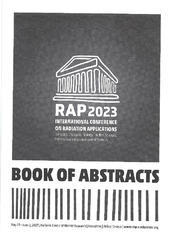Приказ основних података о документу
Comparison of gamma and X radiation attentuation characteristics for ordinary concrete with barite and concrete with limonite and steel
| dc.creator | Janković, Ksenija | |
| dc.creator | Stanković, Srboljub | |
| dc.creator | Terzić, Anja | |
| dc.creator | Stojanović, Marko | |
| dc.creator | Bojović, Dragan | |
| dc.date.accessioned | 2023-08-18T07:34:27Z | |
| dc.date.available | 2023-08-18T07:34:27Z | |
| dc.date.issued | 2023 | |
| dc.identifier.uri | http://rims.institutims.rs/handle/123456789/559 | |
| dc.description.abstract | During the implementation of procedures for designing building barriers for protection against gamma and X radiation, the unavoidable question of choosing construction materials with appropriate mechanical and radiation characteristics for protective barriers arises. Based on engineering practice, it is necessary to compare different types of concrete used for the construction of facilities where there are sources of gamma and X radiation, such as in cases where radiation sources appear in medical facilities with linear accelerators, cyclotron installations for accelerating nuclear particles, in the environment of nuclear reactors, in radioactive waste storages, or in radiation sterilization unit s. In the cost-benefit analysis, several criteria are used to evaluate the characteristics of the concrete, so that in addition to the mechanical characteristics, the radiation characteristics of the construction material are also considered. One of the most important characteristics of concrete for radiation protection is its total mass attenuation coefficient. In this paper, computer code XCOM was used for the calculation of the total mass attenuation coefficients in energy range from 0.01MeV to 100 MeV for three types of concrete: ordinary concrete, concrete with barite and concrete with limonite and steel. Based on the comparison of calculation results, it was concluded that concrete with limonite and steel has greater protective power than other two concrete types for the gamma and X radiation energy less than 30 keV. The second important conclusion is that the concrete with barite has greater protective power than other two concrete types in the range of photon energy from 30 keV to 300 keV, and for photon energy greater than 6 MeV. A detailed analysis of the calculation results found that in the energy range of 400 keV to 6 MeV values for the total mass attenuation coefficients are approximately the same for three different types of concrete. | sr |
| dc.language.iso | en | sr |
| dc.rights | openAccess | sr |
| dc.rights.uri | https://creativecommons.org/licenses/by-sa/4.0/ | |
| dc.source | RAP 2023 International Conference on Radiation Applications, Book of Abstracts | sr |
| dc.title | Comparison of gamma and X radiation attentuation characteristics for ordinary concrete with barite and concrete with limonite and steel | sr |
| dc.type | conferenceObject | sr |
| dc.rights.license | BY-SA | sr |
| dc.citation.spage | 64 | |
| dc.identifier.rcub | https://hdl.handle.net/21.15107/rcub_rims_559 | |
| dc.type.version | publishedVersion | sr |

